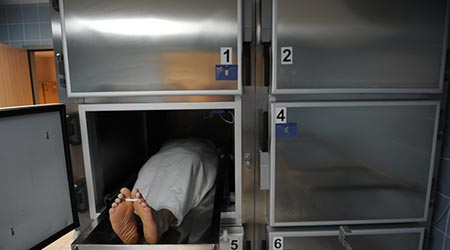Q: We are presently undergoing our three-year licensure inspection by the Dept. of Health. One of the inspectors asked to see our air change records for the morgue. We have never completed air changes for the morgue. We use outside air and make sure the exhaust fan is working properly. So, should we be doing air change testing in the morgue? Also, do we need to do air change testing in all clean and soiled utility rooms in the hospital?
A: When your facility was designed and constructed, the HVAC system had to be designed to certain Air Changes per Hour (ACH). Depending when the facility was designed, the designer would use the AIA Guidelines or the FGI Guidelines, or other state or local regulations as appropriate. You need to find out what those design ACH were at the time the facility was designed/constructed, or last renovated in that area.
It is important to understand that you do not have to meet the latest edition of FGI Guidelines; you just have to meet the edition at the time your facility was designed, or last renovated. It is important to also understand that you must comply with state and local regulations at all times.
So, let’s say the morgue was required to have six ACH at the time it was designed. You must maintain that six ACH for the life of the building, or until you renovate; then you would have to comply with new construction ACH for a morgue. The state inspector’s request is valid: How do you know you are maintaining six ACH if you don’t measure it from time to time? How often should you measure the ACH? The codes and standards do not say, so do a risk assessment and determine what is a valid number. Usually once per year is sufficient as long as you have historical data that shows the ACH rate was always in compliance.
You need to start measuring ACH rates in all areas where there was a design requirement for ACH.
Brad Keyes, CHSP, is the owner of KEYES Life Safety Compliance, and his expertise is in the management of the Life Safety Program, including the Environment of Care and Emergency Management programs.

 UF Health Hospitals Rely on Green Globes to Realize Their Full Potential
UF Health Hospitals Rely on Green Globes to Realize Their Full Potential How Healthcare Facilities Can Be Truly Disaster-Resilient
How Healthcare Facilities Can Be Truly Disaster-Resilient TriasMD Breaks Ground on DISC Surgery Center for San Fernando Valley
TriasMD Breaks Ground on DISC Surgery Center for San Fernando Valley Bigfork Valley Hospital Falls Victim to Data Breach
Bigfork Valley Hospital Falls Victim to Data Breach AI-Driven Facilities: Strategic Planning and Cost Management
AI-Driven Facilities: Strategic Planning and Cost Management